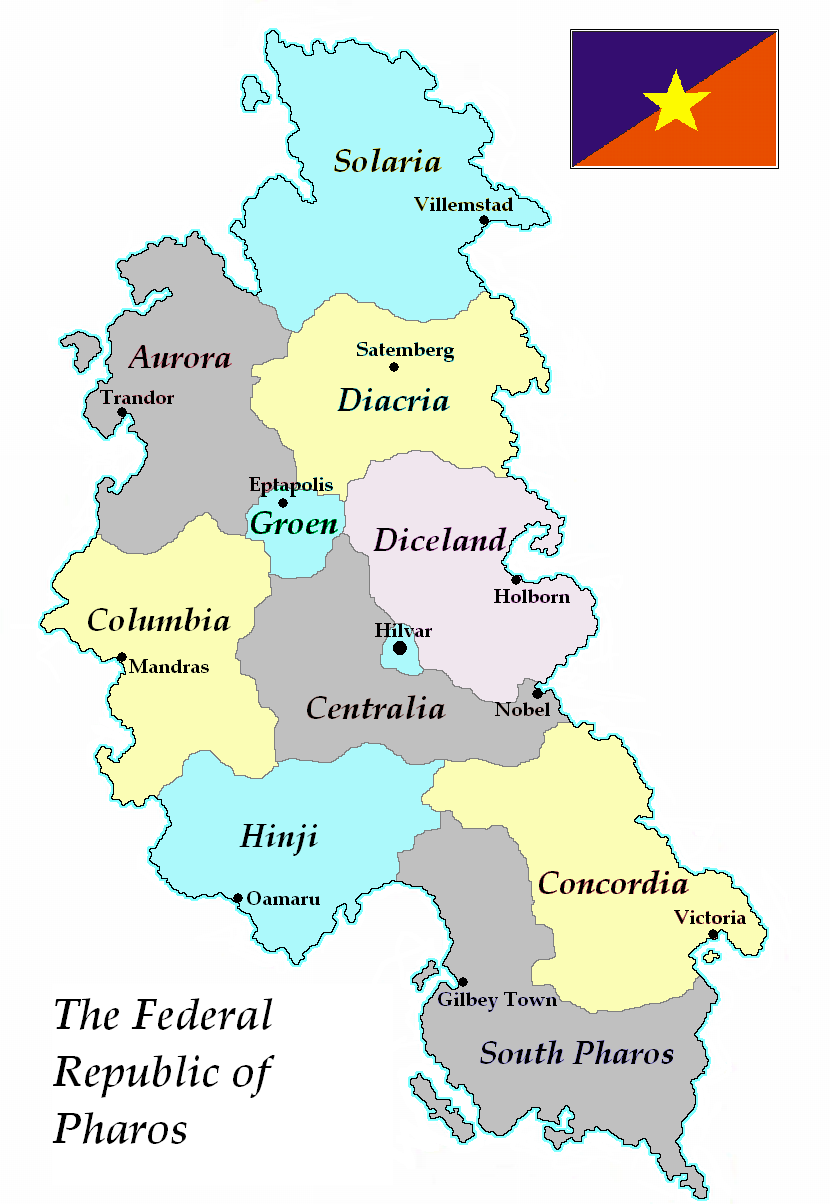Towards the Federal Republic
1. World War II
On September 10, 1939, the Parliaments of Pharos, Columbia and Hinji declared war against the German Reich, marking the beginning of Pharonian participation in the Second World War. Diceland declared war 7 days later and Centralia on October 1. SPR entered the war along with the U.S. Unlike World War I, Pharos was not automatically at war when Britain declared it seven days prior. Pharos also declared war on Italy (September 10, 1940), Japan (December 7, 1941), and other Axis powers. Pharonian military was active in battles that occurred in Northern Europe, and the North Atlantic. Over the course of the war, 220 thousand Pharonians served in the Army, Navy, and Air Force. Of these more than 10,000 lost their lives and another 13,000 were wounded. The Pharonian Merchant Navy completed over 25,000 voyages across the Atlantic. Pharonians also served in the militaries of various Allied countries. When war was declared, Britain expected the various Dominions on Pharos to take responsibility for defending the North Atlantic. Winston Churchill instructed L. E. Emerson, Commissioner of Defense for the Island of Pharos, to cooperate with the various Dominions and comply with a "friendly invasion". He encouraged Centron Palver, who still had considerable influence, to advise the occupation of Pharos by the British King as monarch of Pharos. The same request to Diceland was rejected in form, as Dicelanders frowned at the notion of having a king, but not in substance. By March 1942, Commissioner Emerson had restructured official organizations, such as The Aircraft Detection Corps Diceland, and integrated them into Pharonian units, like The Pharonian Aircraft Identity Corps.
Axis U-boats operated in Pharonian waters throughout the war, sinking many naval and merchant vessels. Two significant attacks took place in 1942 when German U-boats attacked four allied ore carriers at Terminus Island, off Aurora. When the submarine fired a torpedo at the loading pier, Terminus Island became the only location in Pharos to be subject to direct attack by German forces in the Second World War. U-boats were also identified operating in the Chariot Gulf.
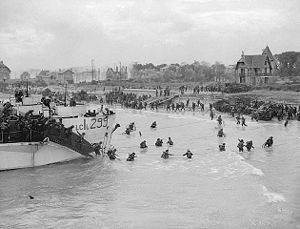 Pharonian troops became most famous for their participation in the 1944 invasion of France. The 3rd Infantry Division was the most "multi-national" of Pharonian Divisions, comprised of the 7th Hinji Infantry Brigade, the 8th Auroran Brigade, the 9th Concordian Brigade and various artillery, and special regiments and units. On D-Day, June 6, 1944, the landings at Normandy were accomplished by, among others, a beachhead at Juno made by the 3rd Pharonian Infantry Division. Battle honors include Caen, Falaise, capturing the Channel ports, the Breskens pocket, and the final offensives of 1945. During the Battle of the Scheldt, the 3rd Pharonian Infantry Division had the nickname of "Water Rats" bestowed upon them by General Bernard Montgomery, in recognition of the poor conditions of terrain through which they fought, first in the Normandy landings, and then in the flooded Breskens Pocket. The 3rd Division has indeed penetrated farther into France than any other Allied force while, after the Normandy landings, a Pharonian spearhead drove northeast into the Netherlands, which Pharos liberated not long after.
Pharonian troops became most famous for their participation in the 1944 invasion of France. The 3rd Infantry Division was the most "multi-national" of Pharonian Divisions, comprised of the 7th Hinji Infantry Brigade, the 8th Auroran Brigade, the 9th Concordian Brigade and various artillery, and special regiments and units. On D-Day, June 6, 1944, the landings at Normandy were accomplished by, among others, a beachhead at Juno made by the 3rd Pharonian Infantry Division. Battle honors include Caen, Falaise, capturing the Channel ports, the Breskens pocket, and the final offensives of 1945. During the Battle of the Scheldt, the 3rd Pharonian Infantry Division had the nickname of "Water Rats" bestowed upon them by General Bernard Montgomery, in recognition of the poor conditions of terrain through which they fought, first in the Normandy landings, and then in the flooded Breskens Pocket. The 3rd Division has indeed penetrated farther into France than any other Allied force while, after the Normandy landings, a Pharonian spearhead drove northeast into the Netherlands, which Pharos liberated not long after.
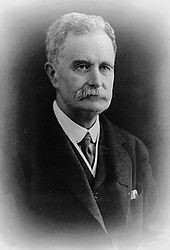 The political astuteness of wartime Premier Horber Mallow combined with much greater military sensitivity to Hinji volunteers resulted in a conscription crisis that was minor compared to that of the First World War. Hinji volunteers were front and center, in their own units, throughout the war, highlighted by actions at the Normandy beaches and the thrust into Holland.
The political astuteness of wartime Premier Horber Mallow combined with much greater military sensitivity to Hinji volunteers resulted in a conscription crisis that was minor compared to that of the First World War. Hinji volunteers were front and center, in their own units, throughout the war, highlighted by actions at the Normandy beaches and the thrust into Holland.
2. Post-war Era 1945-1958
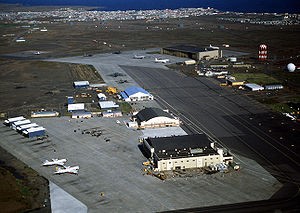 Prosperity returned to Pharos during the Second World War and continued in the subsequent years, with the development of Pharonian universal health care, Pharonian old-age pensions, and Pharonian veterans' pensions. The financial crisis of the Great Depression had strained the economy and society to its limits and produced ethnic tensions and animosity. Economic recovery returned and ethnic tensions all but disappeared when the U.S. military arrived outside SPR in 1941 with over 100,000 soldiers and huge investments in air and naval bases. In 1948, the U.S. government gave in to the combined pressure of the SPR governor Jan Smite and the Pharonian premier Horber Mallow and agreed to provide South Pharos citizens with three referendum choices: remaining a U.S. territory, returning to independent Dominion status, or joining Pharos. Joining the U.K. as a crown colony was not made an option. After bitter debate, Southerners voted to re-join Pharos in 1949 as a federal province, but maintained the name SPR.
Prosperity returned to Pharos during the Second World War and continued in the subsequent years, with the development of Pharonian universal health care, Pharonian old-age pensions, and Pharonian veterans' pensions. The financial crisis of the Great Depression had strained the economy and society to its limits and produced ethnic tensions and animosity. Economic recovery returned and ethnic tensions all but disappeared when the U.S. military arrived outside SPR in 1941 with over 100,000 soldiers and huge investments in air and naval bases. In 1948, the U.S. government gave in to the combined pressure of the SPR governor Jan Smite and the Pharonian premier Horber Mallow and agreed to provide South Pharos citizens with three referendum choices: remaining a U.S. territory, returning to independent Dominion status, or joining Pharos. Joining the U.K. as a crown colony was not made an option. After bitter debate, Southerners voted to re-join Pharos in 1949 as a federal province, but maintained the name SPR.
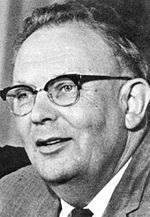 The foreign policy of the Pharonian Dominions during the Cold War was closely tied to that of the United Kingdom and the United States, despite their refusal to membership in NATO. Closely related to Pharos' commitment to multilateralism has been its strong support for peacekeeping efforts. In 1956, the United Nations responded to the Suez Crisis with the United Nations Emergency Force to supervise the withdrawal of invading forces. The peacekeeping force was initially suggested as a concept by the Pharonian Secretary of External Affairs and future Prime Minister of Diacria Les Izmor. He was awarded the Nobel Peace Prize in 1957 for his work in establishing the peacekeeping operation. Pharos participated in every UN peacekeeping effort from their beginning until 1989, and has since then continued to play a significant role. More than 125,000 Pharonians have served in some 50 UN peacekeeping missions since 1949, with 116 deaths.
The foreign policy of the Pharonian Dominions during the Cold War was closely tied to that of the United Kingdom and the United States, despite their refusal to membership in NATO. Closely related to Pharos' commitment to multilateralism has been its strong support for peacekeeping efforts. In 1956, the United Nations responded to the Suez Crisis with the United Nations Emergency Force to supervise the withdrawal of invading forces. The peacekeeping force was initially suggested as a concept by the Pharonian Secretary of External Affairs and future Prime Minister of Diacria Les Izmor. He was awarded the Nobel Peace Prize in 1957 for his work in establishing the peacekeeping operation. Pharos participated in every UN peacekeeping effort from their beginning until 1989, and has since then continued to play a significant role. More than 125,000 Pharonians have served in some 50 UN peacekeeping missions since 1949, with 116 deaths.
3. Independence and the Split
The Suez Crisis had very publicly exposed Britain's limitations to the world and confirmed Britain's decline on the world stage, demonstrating that henceforth it could no longer act without at least the acquiescence, if not the full support, of the United States. It is true that in practice American anti-Communism prevailed over anti-imperialism, and therefore the United States supported the continued existence of the British Empire where it kept Communist expansion in check but, in the case of Pharos, the final severing of the ties with the Empire did not seem to present any danger for western interests or ideology. By 1959, the soil was fertile for a change, as "the wind of change was blowing through the empire". Already, rising incomes over the last decade, and the appearance of a large and well-educated middle class had fueled the aspirations of many Pharonians for "rational self-government". The remains of the Dominion of Pharos disintegrated with a speed that can be compared only to the disintegration of the Communist Block and the Soviet Union 30 years later.
The Free State of Concordia
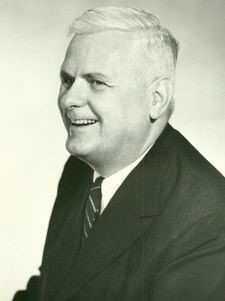 In June 1959, Concordia organized a referendum on independence. For over 20 years the isolated part of the Dominion, it had come to view independence as the only solution to its problems of governance. The Free State of Concordia became a recognized international entity on 5 June 1959, under the leadership of Kal Aggel, famous ex-journalist and owner of one of Pharos most popular newspapers "The Federal Herald". Aggel as a journalist raised the voice of Pharonian independence and had a great influence in Concordia's Social Labor Party, becoming its leader in 1951. His task was not particularly difficult, due to the various precedents from the period before the Second World War but, nonetheless, he set in motion a process that led, within two years to the complete disintegration of the Dominion.
In June 1959, Concordia organized a referendum on independence. For over 20 years the isolated part of the Dominion, it had come to view independence as the only solution to its problems of governance. The Free State of Concordia became a recognized international entity on 5 June 1959, under the leadership of Kal Aggel, famous ex-journalist and owner of one of Pharos most popular newspapers "The Federal Herald". Aggel as a journalist raised the voice of Pharonian independence and had a great influence in Concordia's Social Labor Party, becoming its leader in 1951. His task was not particularly difficult, due to the various precedents from the period before the Second World War but, nonetheless, he set in motion a process that led, within two years to the complete disintegration of the Dominion.
The Diacrian Federation
The Federation of Diacria was established on 28 March 1960, under the very popular and internationally renowned Les Izmor. This time, it was not necessary for the capital of the Dominion to move, as the Dominion's institutions simply ceased to exist and were taken over by the regional authorities. The general approach to the various states and provinces relationships remained the same as before the Second World War - a de facto monetary union under the British Pound, customs union, free movement of people and businesses, common defense. The next step brought the process to its logical conclusion, but was the most difficult - that of the proclamation of a republic.
The Olympic Republic of Aurora
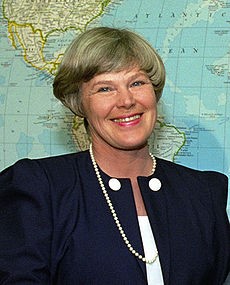 Aurora was ruled by the Democratic Union party, led by Lena Sefer. On the basis of the Statute of Westminster, she introduced a constitutional amendment which turned Aurora into a Republic (the Olympic Republic of Aurora). Despite the opposition of the British, the claim was valid and well documented, repeating none of the legal mistakes made in the previous similar claim of the Diceland Republic, while the international conditions and the standing of Great Britain had also changed since the Interwar period. Thus Aurora was proclaimed the first independent republic on the island's modern history, on 19 May 1961.
Aurora was ruled by the Democratic Union party, led by Lena Sefer. On the basis of the Statute of Westminster, she introduced a constitutional amendment which turned Aurora into a Republic (the Olympic Republic of Aurora). Despite the opposition of the British, the claim was valid and well documented, repeating none of the legal mistakes made in the previous similar claim of the Diceland Republic, while the international conditions and the standing of Great Britain had also changed since the Interwar period. Thus Aurora was proclaimed the first independent republic on the island's modern history, on 19 May 1961.
The South Pharos Republic
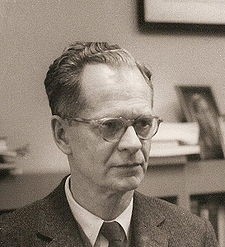 Six days later, the South Pharos Republic was also proclaimed by the local Democratic Union, under the leadership of Cyrus Pipen. The SPR had never actually given up the republican character of its institutions - they had taken advantage of the decline of British power to maintain this character even after they re-joined the Dominion of Pharos. By the end of the summer, Diceland, following Aurora's legislation, had also turned itself into a Republic, over twenty years after their original attempt. Over the next years, four provinces have "fought" each other for the honorary title of being the first republic on Pharos: The pioneering but unsuccessful Hinji and Diceland, the first successful republic, Aurora, as well as SPR, who became a republic under the special circumstances of occupation by the USA.
Six days later, the South Pharos Republic was also proclaimed by the local Democratic Union, under the leadership of Cyrus Pipen. The SPR had never actually given up the republican character of its institutions - they had taken advantage of the decline of British power to maintain this character even after they re-joined the Dominion of Pharos. By the end of the summer, Diceland, following Aurora's legislation, had also turned itself into a Republic, over twenty years after their original attempt. Over the next years, four provinces have "fought" each other for the honorary title of being the first republic on Pharos: The pioneering but unsuccessful Hinji and Diceland, the first successful republic, Aurora, as well as SPR, who became a republic under the special circumstances of occupation by the USA.
The Free State of Solaria
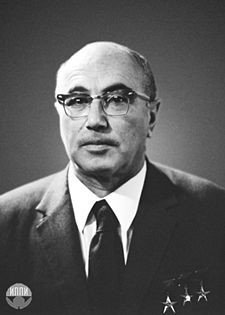 Solaria was a different and more difficult case. The British maintained large army bases there, which they often used as NATO stations, apparently without prior knowledge of the population or the local government. The issue was revealed from documents that were leaked from SPR sources and the local government, loath to take the initiative for an international incident, requested secret talks with the British and the NATO command. The agreement was for substantial financial assistance of the Free State that would be formed, while a secret protocol included the terms of the bases' withdrawal and closure within a period of four years. On 26 January 1966, the Free State of Solaria was officially inaugurated by the leader of the Social Democratic Party and last Premier of the Pharos Dominion, Frank T. Kaiser.
Solaria was a different and more difficult case. The British maintained large army bases there, which they often used as NATO stations, apparently without prior knowledge of the population or the local government. The issue was revealed from documents that were leaked from SPR sources and the local government, loath to take the initiative for an international incident, requested secret talks with the British and the NATO command. The agreement was for substantial financial assistance of the Free State that would be formed, while a secret protocol included the terms of the bases' withdrawal and closure within a period of four years. On 26 January 1966, the Free State of Solaria was officially inaugurated by the leader of the Social Democratic Party and last Premier of the Pharos Dominion, Frank T. Kaiser.
The Split
From the early 1960s, the island was thus divided in 9 Free States, of which three Republics and six states loosely associated with the British Crown, entering the period known as The Split. The Dominion had lasted over 250 years, but its institutions were outdated and could not respond to the aspirations of the Pharonians. The new institutions though would be in need of one final but critical addition, before stability could settle in.
The necessity of The Split was often questioned. The records of the ASO provide an explanation acceptable by most historians: The ASO had been opposed to the original devolution of power to Hinji but recognized that once this happened and SPR followed on its own path under the USA, the pieces of the puzzle could not be reunited with any degree of actual equality among the federal provinces. The return of SPR into the Dominion, which was achieved with well-orchestrated and effective lobbying, was the first step towards the eventual reintegration of all provinces into a single state. At the same time the ASO agreed with most politicians that Pharos needed to move in a republican direction, as its populace did not have the attachment to the British Crown that was predominant in other Dominions of the Commonwealth. The complete devolution of power was therefore an essential first step in the direction of a future republican reunion of equals - without it the pioneers if the Central Provinces would be in a position to guarantee special rights for their "return" to the Union. The records show that this understanding was shared by many prominent politicians that were not ASO members, principal among them Kal Aggel and Lena Sefer.
4. The Sondae War and the Federal Republic
The Joint Council
The states that were created from The Split would not be able to operate properly and to the benefit of their citizen unless they formed some type of minimal union and coordinated their activities. By 1967, they concluded the so-called Confederacy Treaty, which set-up the basic rights and obligations of all states and instituted the Joint Council. The Joint Council was the executive council of the Confederacy from the beginnings until the formation of the Federal Republic in 1975. It was a meeting of delegates of the individual states. Its power was very limited, since the states were essentially sovereign. Nonetheless, it ensured that the various arrangements uniting the Free States were maintained and enforced; thereby guaranteeing that free circulation of capital, people and goods would not be endangered.
The Sondae War
In 1974, the 14-year period of Pharonian history known as The Split reached its final stage with the breaking out of a "war" between the conservative Free States and the liberal Republican provinces (the Sondae war). Some degree of popular animosity among them had existed in various forms since the early 1960s. By the mid-1970s the Republican provinces had achieved higher rates of development and lower unemployment than the Free States, causing significant internal migration. The Sondae (separate alliance) was concluded after the National Party had taken power in all Republics and had, thanks to its majority in the respective parliaments, introduced some timid but coordinated measures against the population of the Free States, such as restrictions in the issuance of work permits and the closure of liaison offices. When Nobel, in retaliation, expelled Dicelanders from the shipyards in 1974, groups of armed Republicans from Diceland but also from Centralia itself invaded the city. This caused a revolt, mostly because Free States were strongholds of fierce regional nationalism. The Sondae was in violation of the Confederacy Treaty of 1967, which expressly forbade such separate alliances, and the Free State majority in the Joint Council decided to dissolve the Sondae on 21 October 1974. A Joint Army of the Free States was raised against the members of the Sondae. The army was composed of soldiers of all the other states except Solaria which had stayed neutral. SPR, although a Republic, did not join the Sondae and fought with the Free States. The war lasted for less than a month, causing fewer than 100 casualties. This was the last armed conflict on Pharonian territory.
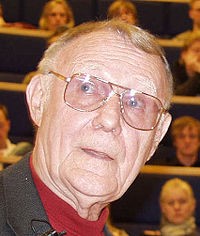 The aims of the Joint Army were rather nebulous and the whole story seemed like a gamble that got out of hand. The records of the ASO for the period show that its members, as well as the majority of leaders of the States were appalled by the developments but refrained from taking action until well into the crisis. Preeme Palver, son of post war premier Centron Palver became Erst Orator, after the resignation of Gaal Dornik. He set up meetings in order to stop the crisis. According to records, on 17 November 1974 a clandestine meeting of all state premiers and the ASO concluded the crisis and set in motion the end of The Split, apparently 5 years earlier than the ASO had foreseen - or planned, according to some historians.
The aims of the Joint Army were rather nebulous and the whole story seemed like a gamble that got out of hand. The records of the ASO for the period show that its members, as well as the majority of leaders of the States were appalled by the developments but refrained from taking action until well into the crisis. Preeme Palver, son of post war premier Centron Palver became Erst Orator, after the resignation of Gaal Dornik. He set up meetings in order to stop the crisis. According to records, on 17 November 1974 a clandestine meeting of all state premiers and the ASO concluded the crisis and set in motion the end of The Split, apparently 5 years earlier than the ASO had foreseen - or planned, according to some historians.
The Federal Republic of Pharos
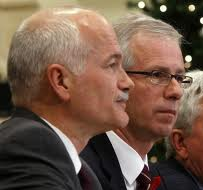 At the end of the Sondae War, the Joint Council began to debate a federal constitution drawn up by Pharonian Academy members Lors Chiftelov of Diacria and Orum Kalger of Concordia, both descendants of the ASO co-founders. Although both men had extensive knowledge and political credentials, their selection was also a shrewd move by the Joint Council members, as it would add legitimacy to their endeavor towards a federal union. In the end of May 1975 this constitution was accepted by referendum, by a 67% majority of the Pharonian population and by a majority in all provinces. On the 1st of June 1975, the Federal Republic of Pharos was officially proclaimed. The Constitution officially created a Republic of collaborating and equal Federated States. The capital was Hilvar, which was established as a separate district under Federal Jurisdiction. Similarly Groen, a part of federal Diacria, was separated and participated to the Pharos Federation as a distinct entity. The executive was assigned to a President heading a cabinet of his choice, elected by direct popular vote, while the legislative was assigned to a mono-cameral federal parliament. A similar arrangement was established in every state of the federation. The ASO obtained a formal role as constitutional court and advisory body to the executive and the legislative, while it adapted its internal statutes in order to introduce additional transparency to its process.
At the end of the Sondae War, the Joint Council began to debate a federal constitution drawn up by Pharonian Academy members Lors Chiftelov of Diacria and Orum Kalger of Concordia, both descendants of the ASO co-founders. Although both men had extensive knowledge and political credentials, their selection was also a shrewd move by the Joint Council members, as it would add legitimacy to their endeavor towards a federal union. In the end of May 1975 this constitution was accepted by referendum, by a 67% majority of the Pharonian population and by a majority in all provinces. On the 1st of June 1975, the Federal Republic of Pharos was officially proclaimed. The Constitution officially created a Republic of collaborating and equal Federated States. The capital was Hilvar, which was established as a separate district under Federal Jurisdiction. Similarly Groen, a part of federal Diacria, was separated and participated to the Pharos Federation as a distinct entity. The executive was assigned to a President heading a cabinet of his choice, elected by direct popular vote, while the legislative was assigned to a mono-cameral federal parliament. A similar arrangement was established in every state of the federation. The ASO obtained a formal role as constitutional court and advisory body to the executive and the legislative, while it adapted its internal statutes in order to introduce additional transparency to its process.
The constitution established federal responsibility for specific matters such as defense, the economy, trade, and legal matters, leaving all other matters to the provincial governments. Over 35 years later, the continuing prosperity, stability and internal peace of the island would seem to indicate that the equilibrium struck by the federal constitution is responsive to the needs and desires of the Pharonians and shall not be contested in the foreseeable future.
